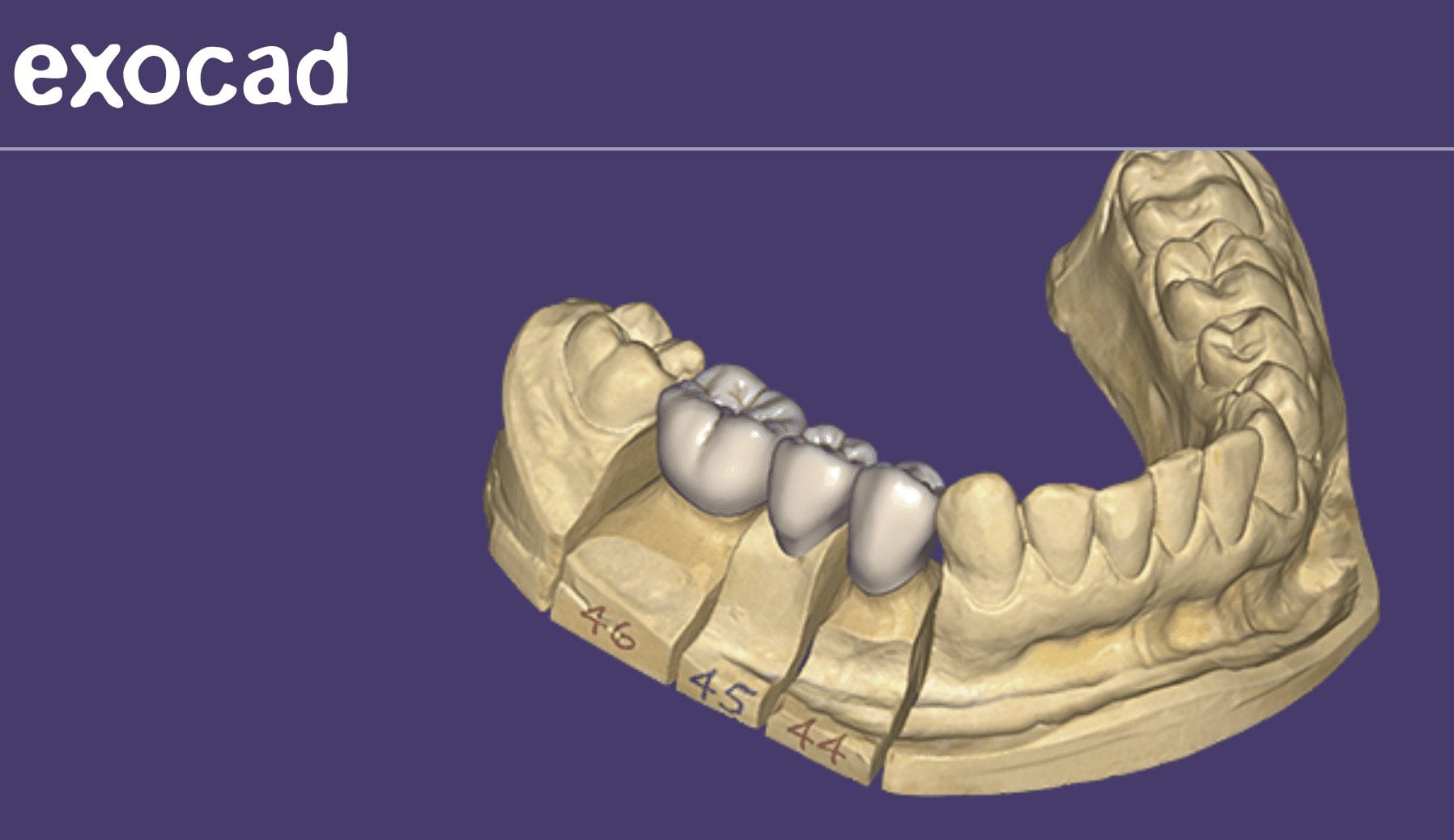
CAD-Ray is Now Officially a Reseller of the Exocad Software



We had a great booth and lots of activity at the ADA meeting and will be in New York for the Greater New York convention
greater new york booth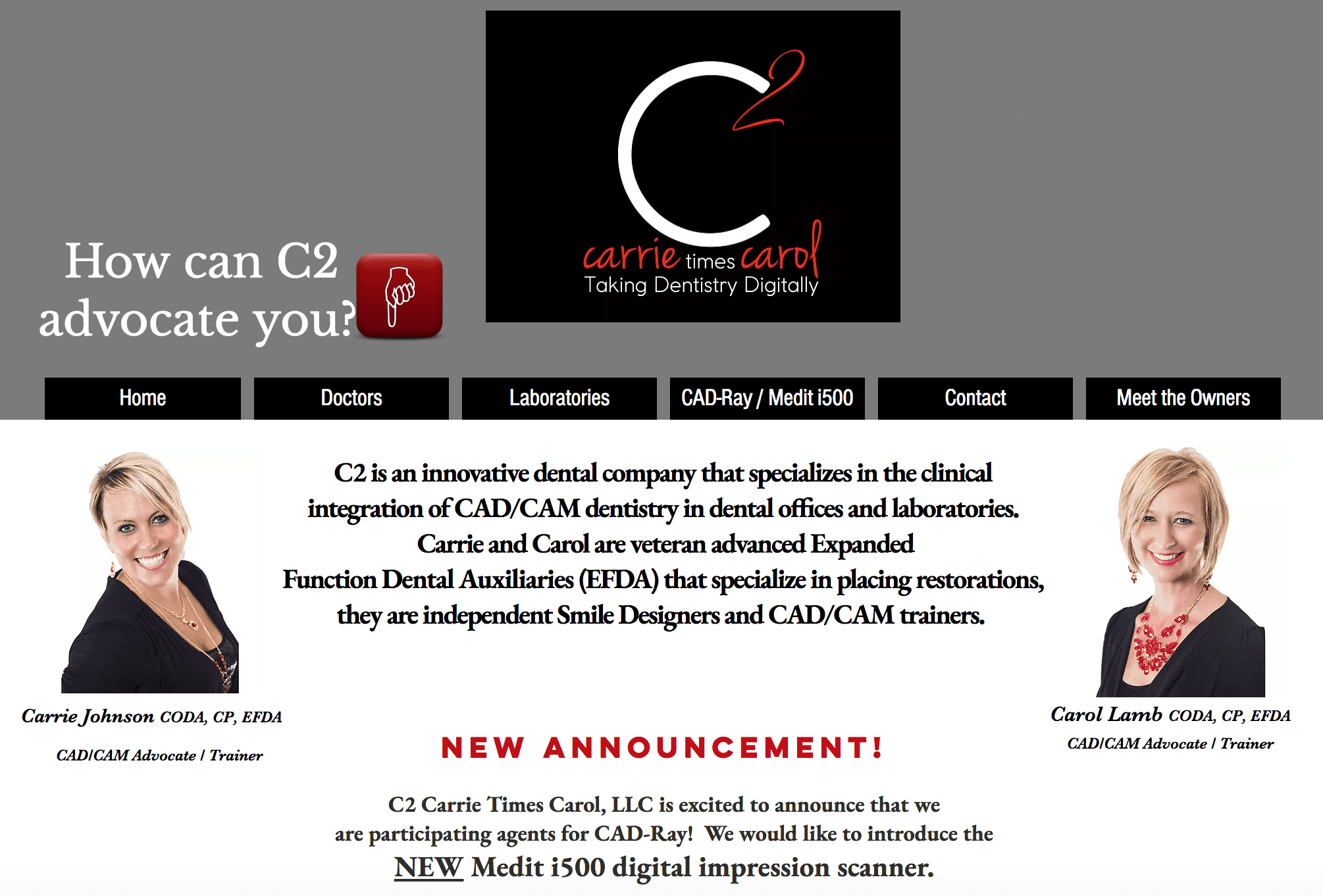
Happy Hump Day! We might be in your area! It’s going to be a crazy month! Here’s the 411! WE ARE SHOWING THE WORLD HOW MUCH WE LOVE DIGITAL DENTISTRY! C2 will be traveling to Utah this weekend for a show on Saturday….
North Carolina & South Carolina Sunday & Monday!
Send us a PM if would like a demo! #mediti500 #c2style #welovedigitaldentistry
Grady Dix Armen Mirzayan Frank Weinstein Carol BarberLambPosted by Carrie Mcnabb Johnson on Wednesday, October 10, 2018
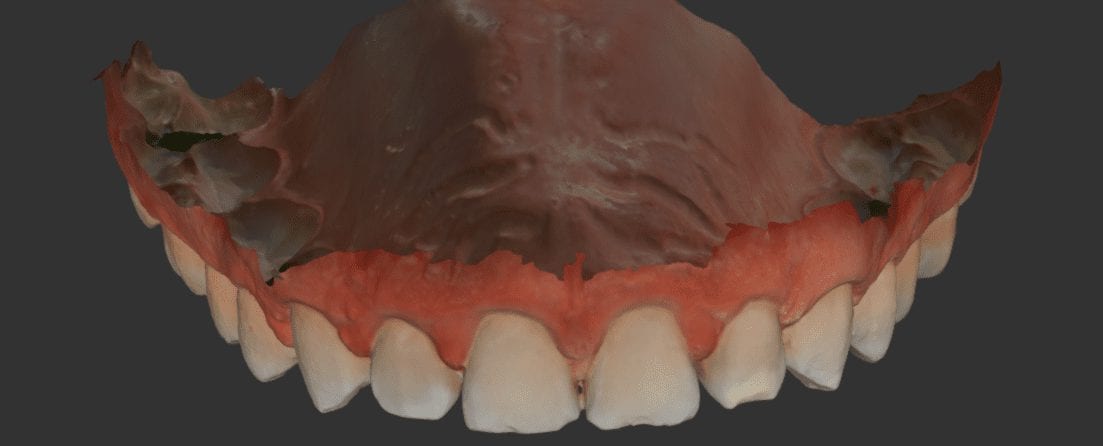
There are many clinical advantages to taking digital impressions over traditional ones. Some of these concepts you may not appreciate until you are a user.
We break these down into the following categories:
EDITING IMPRESSIONS AND MODELS
INDEPENDENT OF TIME
SEQUENCING FREEDOM
PREDICATABLE CONTACTS AND OCCLUSION
For single unit restorations, all you need to really capture, besides the margins, are the contacts of the adjacent teeth and the occlusal surface of the opposing teeth that will make contact with the restoration.
With traditional impressions, to get predictable results, you should capture both arches completely so when the lab pours up the models, they can properly tripod the casts for accurate relationships between upper and lower arches. With digital impressions, you can just capture the immediate teeth adjacent to your prep and the opposing and get a very predictable result. Now, the more data you capture with the digital impressions, the more it will help with designing the restorations. For example, you can better align the cusp tips in relation to the arch form.
In this video, you can see how there are some “holes” in the model, but they play no role in the final result and its is unnecessary to capture them. You certainly can if you wish, but the point is that capturing the bite is so much easier for single units with digital than it is for traditional impressions
[videopress OZuTKEUo permalink=”false” hd=”true” loop=”true” autoplay=”true”]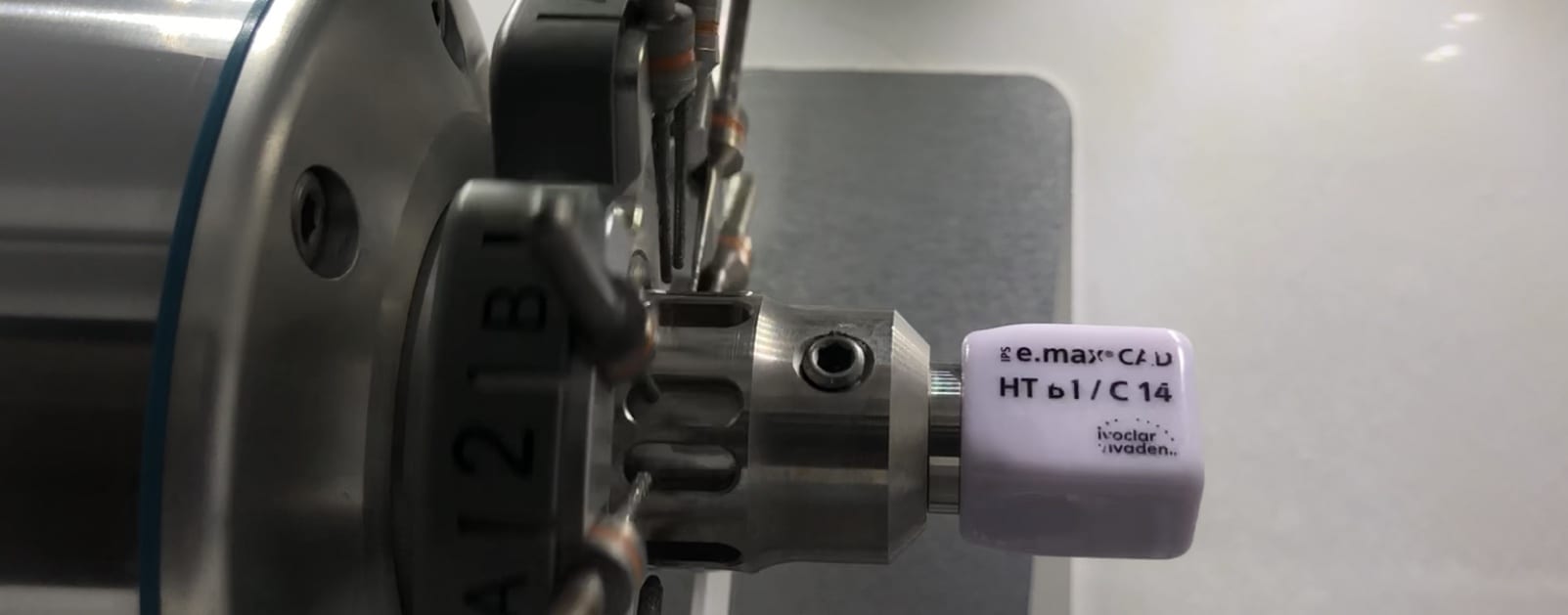
This a very common question we get at CAD-Ray.com and it reflects on how little dentists understand about digital impressions and CAD/CAM in general.
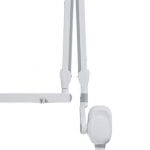
It reminds me of a dental conference I want to, fresh out of school, placing orders for our start-up practice. As we went to the X-Ray equipment section, one of the first things the representative said to us was that their machines are “Digital Ready”! We all had good laugh explaining to the rep that the machine had nothing to do with digital X-Rays, the sensors did!
We feel the same way with digital impressions and CAD/CAM platforms when people talk about integration and making sure one “product talks to the another ” and how it all needs to be developed by the same single manufacturer. It’s loaded with a lot of inaccuracies and misrepresentations.
The reality is that every system has its flaws and can have just as much trouble talking to a machine manufactured by the same company! As dentists, we are much smarter with our decision processes now, but it is still a buyer-be-ware landscape.
Here are some basics you should appreciate before committing to a high ticket item. It’s imperative to understand that imaging has little to no impact on milling. These are completely independent processes- let us explain:
You can image (take an intra-oral scan) with system A. Then you can take the data from system A and take it to CAD software of system B. A lot can go wrong here at this step alone. Simple examples include;
Keep in mind that this can even happen if you stay within a “System A” or “complete system”. Luckily a lot of this is ironed out already with legacy and legitimate products and competent practitioners. Now comes the design step. You have a few choices; exocad and 3shape being the leaders. If exocad does the margin placement and the final restoration from start to finish, a lot of errors are eliminated.
After the design process, comes the nesting and manufacturing. At this step, the milling machine has NO idea what iOS you have used. It’s just data for a restoration that it needs to process. Ar this most vulnerable step, we need to make sure the CAM software for a particular machine can interpret the design software that did the nesting. A lot happens here;
[videopress yOHyMMVp permalink=”false” hd=”true” loop=”true” autoplay=”true”]Then comes the consideration for your milling needs.
The trickiest part of all this is the last step. Making sure the mill has the right cam to talk to design software. This can be a nightmare if you don’t do your homework.
So, with the Medit iOS you can mill to any machine. You can even take it to cerec inlab software and Jump through a lot of hoops to mill with CEREC chair side milling machine. Not worth the headache!
The CEREC chairside mill remains the fastest carver of emax restorations, but it can come at a cost – you need to bulk out the margins so they don’t break off at mill.
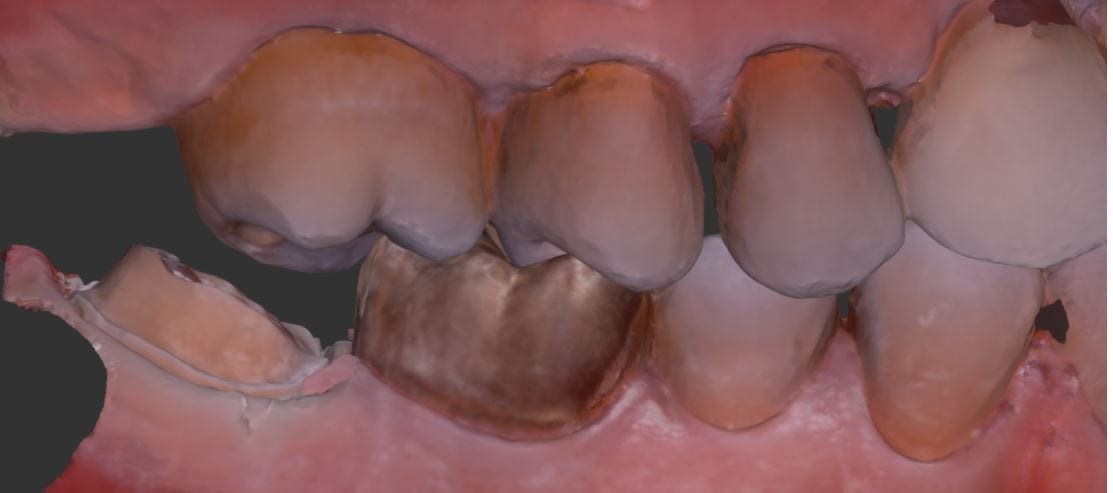
Upon preparing the second molar for full cuspal coverage, the lack of clearance necessitated a refining the preparation. The great part of digital dentistry is that you don’t have to take a whole new impression.
You can just selectively crop out the area that needs refinement, protect the areas you are satisfied with, and fill in the areas that are missing data. You can see how this case was managed in this video and how the final buccal bite was captured. We always recommend that you capture the bite at the last step so that you can verify clearance through the camera itself.
WATCH THE DESIGN AND IN OFFICE MILLING OF THIS RESTORATION
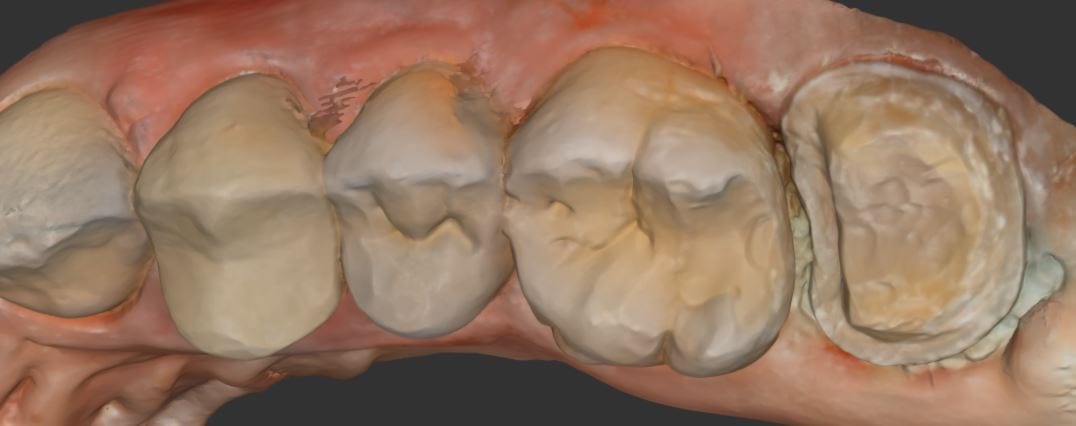
It was a long struggle to find margins with the Omnicam and after 4 years it was sold. The margin definition and resolution never reached an acceptable level. After seeing margins from high resolution scans by the Medit and defining them in exocad, it completely validated that we shouldn’t settle for anything less than the highest standard. This is an scan performed on a upper second molar with tough access, replacing a failing crown.
Download STL
Download OBJ
Download PLY
LAST X-RAY IS IMMEDIATE POST OP- EXCESS CEMENT WAS REMOVED AFTER FILM CHECK
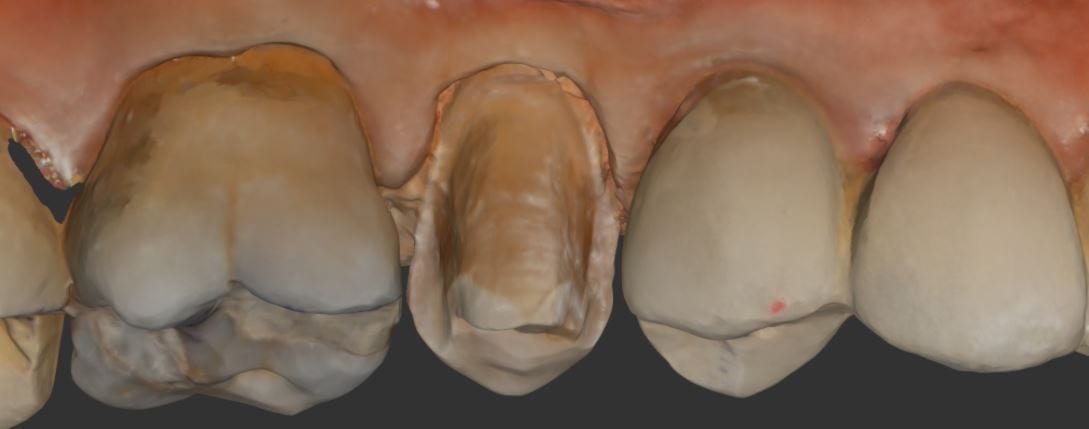
This article demonstrate how a case be set up while the patient is being anesthetized. While waiting for it to take effect, your team can scan the opposing arch, the arch to be prepared, and even the buccal bite. You can see how that is set up in first video. Notice how we crop out the tooth to be prepared so that the software doesn’t get confused between the preop and prep stages.
[videopress ZvGLVAM6 permalink=”false” hd=”true”]Once the tooth is prepared, the premolar is imaged back into the arch form in high resolution mode. This mode comes in handy for picking up the enamel that is exposed at the cavosurface margins. Some intra-oral imaging systems struggle with picking up the detail in these situations.
You can see how clearly discernible the margins are in this preview. Feel free to download the case data at the end of the article. Please note that areas that are not critical for the restoration design were essentially ignore as they play no significant role in the desired outcome.
Download STL
Download OBJ
Download PLY

What is Exocad?
What is the difference between Exocad DentalCAD and Exocad Chairside (C.S) ?
| Add-On Module | Exocad DentalCAD | Exocad Chairside (C.S.) |
|---|---|---|
| Bite Splint Module | Yes | Yes |
| Provisional Module | Yes | Yes |
| TruSmile Technology | Yes | Yes |
| Custom abutments | Yes | Coming Soon |
| Screw-retained bridges | Yes | No |
| Standard bars | Yes | No |
| Complex bars | Yes | No |
| Create physical models | Yes | No |
| Bite Splint Module | Yes | No |
| Full dentures | Yes | No |
| Partial framework design | Yes | No |
| Virtual Articulator | Yes | No |
| Smile Design | Yes | No |
| Jaw Motion Import | Yes | No |
| DICOM Viewer | Yes | NO |
What are the pricing and software options for Exocad DentalCAD?
| SOFTWARE | CAD-FLEX | CAD-PERMANENT |
|---|---|---|
| Price | $2600 | $5000 |
| PERPETUAL Yearly Maintenance Fee | $1500 | N/A Software still functions if you opt out, but no new features will be added |
| OPTIONAL Yearly Fee for Updates | N/A Software stops functioning without yearly fee. | $1200 For continuous software updates |
| Implant Restorative Module | $500 / Year (Perpetual) FDA regulations mandate yearly updates | $ 1200 one time purchase with yearly optional $450 updates |
| Provisional Module | $250 / year (Perpetual) | $600 one time purchase with yearly optional $150 updates |
| Bite Splint Module | $350 / year (Perpetual) | $ 1200 one time purchase with yearly optional $450 updates |
| Implant Planning | Coming Soon | Coming Soon |
What are the pricing and software options for Exocad Chairside C.S.?
[wc_product_slider show_type=”category” category_id=”66″ filter_type=”” number_products=”6″ skin_type=”widget” widget_effect=”fade” card_effect=”fade” slider_auto_scroll=”yes” effect_delay=”1″ effect_timeout=”4″ effect_speed=”2″ image_size=”woocommerce_thumbnail” align=”none” width=”90″ width_type=”%” margin_top=”10″ margin_bottom=”10″ margin_left=”10″ margin_right=”10″]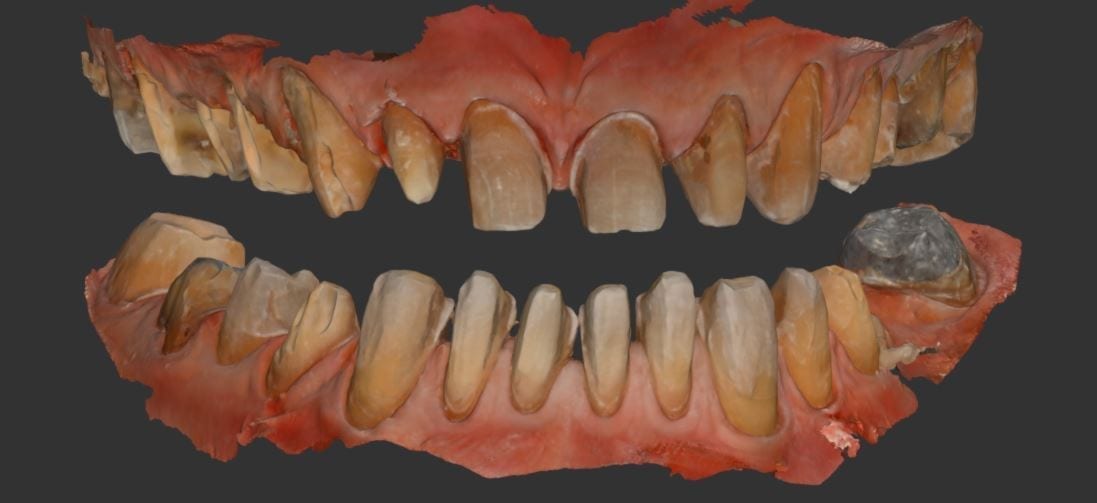
To see this case presented in webinar fashion click on the image and enter the members area for much greater detail and information
Pre-existing restorations that warranted replacement with an increase in vertical dimension.
Pre-existing restorations that warranted replacement with an increase in vertical dimension. The upper and lower arch were captured with the medit I500 and articulated together with enough clearance to accommodate new restorations and to restore the patient to an ideal tooth position.
This video shows how the vertical dimension was captured with cotton rolls blocking out the tongue and the dark oro-pharynx, which usually spell trouble for an IOS
The digital models were then imported into a third party software where a library of tooth morphologies are available for the clinician to choose from.
Once the appropriate library is chosen, the digital wax ups are performed. In the subsequent photos you can see the transparent overlay of the wax-ups to the original position of the existing dentition
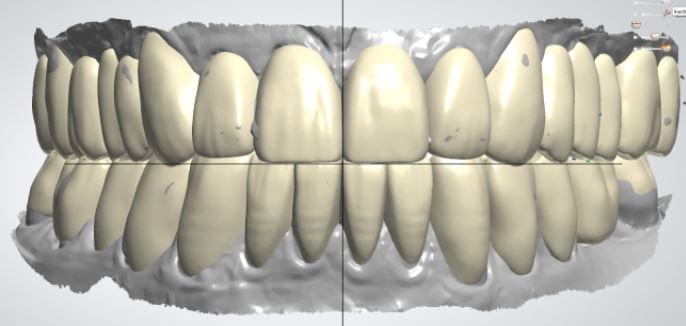
Once the case is designed to the ideal vertical dimension then multiple shells can be fabricated for treatment. The wax up model can be uniformly reduced by .5mmm’s circumferentially and a temporary shell can be designed. Once the teeth are prepared, these shells can be relined and seated onto the preps.
PREP AND TEMPS
How was this done? Watch this video of how the case was imaged over a 4 hour time span in multiple segments
FIRST VERTICAL DIMENSION
The initial vertical dimension was greater than desired and the tooth shape was too bulky in appearance.
ADJUSTED TEMPORARIES AND NEW VERTICAL DIMENSION
Over the course of a few appointments, the vertical dimension was reduced and the temporaries were adjusted to the patient’s desires. The new upper and lower arch were captured with the Medit i500 and the jaws were related to each other.
This was then imported into exocad where the prepped arches from a few weeks prior were force matched to the new bite
[videopress Zj7XsYG4]After the upper jaw was related to the temps, the same was done with the lower arch. Great care was taken to make sure the arches were properly related to each other throughout the process
[videopress ObPk1CAK]CASE DESIGNS
The case was designed by CADENT BESSA, and the models were printed by Burbank Dental Lab with Carbon Printers. There restorations were milled and cut back and layered by Burbank Dental Lab
IMAGES OF PRINTED MODELS
[videopress vWPj7dBI permalink=”false” hd=”true” loop=”true” autoplay=”true”]
IMMEDIATE POST-OP PHOTOS AND VIDEO WITH IPHONE CAMERA
ONE WEEK POST-OP RADIOGRAPHS / CEMENT CHECK
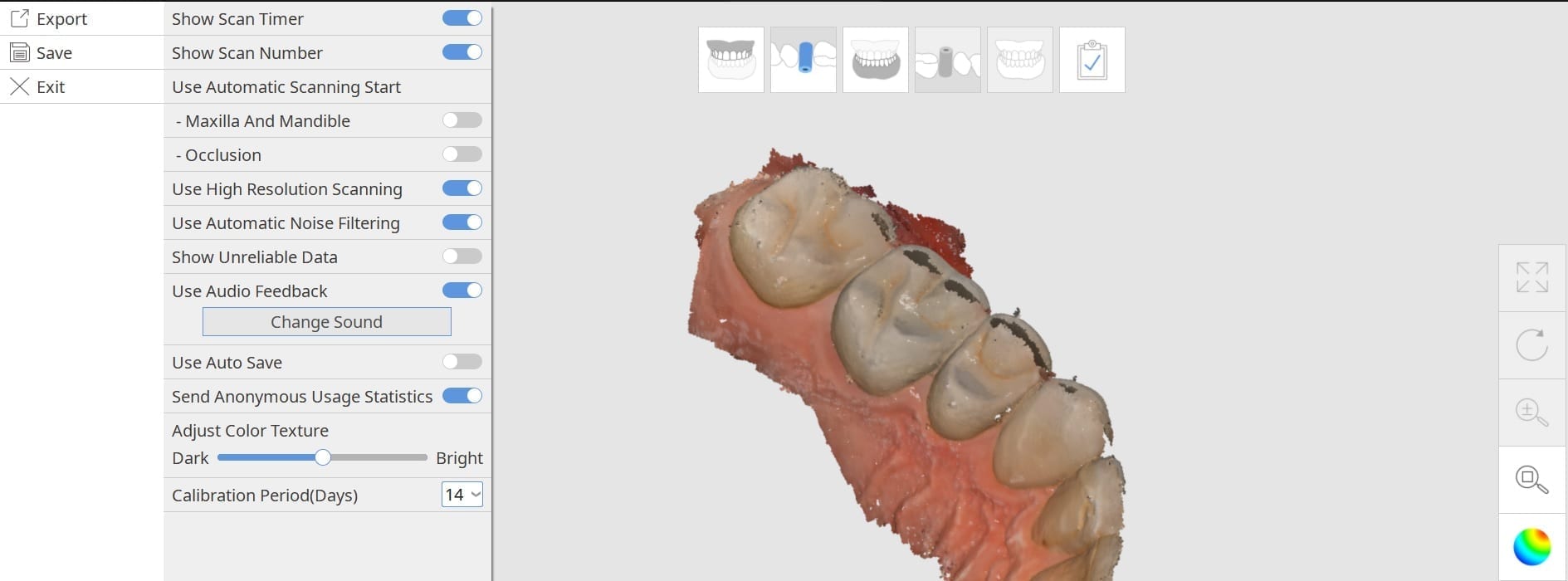
| Video 1 | Video 2 | Video 3 | Video 4 | Video 5 | |
|---|---|---|---|---|---|
| High Resolution Scanning | No | No | No | No | Yes |
| Automatic Noise Filtering | Yes | Yes | No | Yes | Yes |
| Show Unreliable Data | Yes | No | Yes | No | No |
Video 1- Show Unreliable Data and Automatic Noise filtering (High Resolution Scan off)
Video 2- Use Automatic Noise filtering / Do Not Show Unreliable Data and High Resolution Scan off)
Video 3- No Automatic Noise-filtering / Show Unreliable Data
[videopress uOCpT2b2]
Video 4- Do Not Show Unreliable Data and Do Not Use High Resolution Scanning / Use Auto Noise Filtering
[videopress mNyjB3cc]
Video 5- Do Not Show Unreliable Data / Use Automatic Noise Filtering and High Resolution Scan
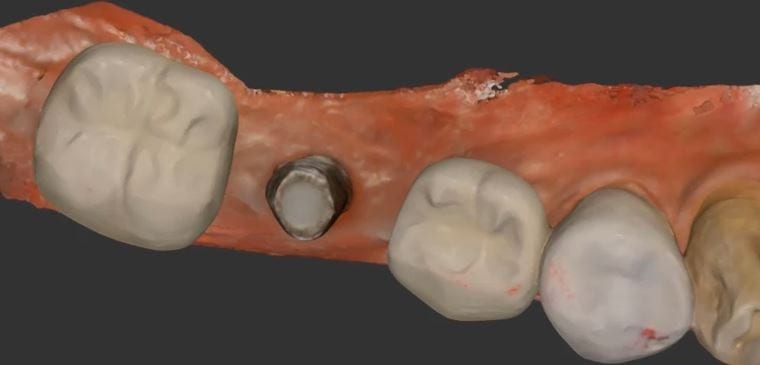
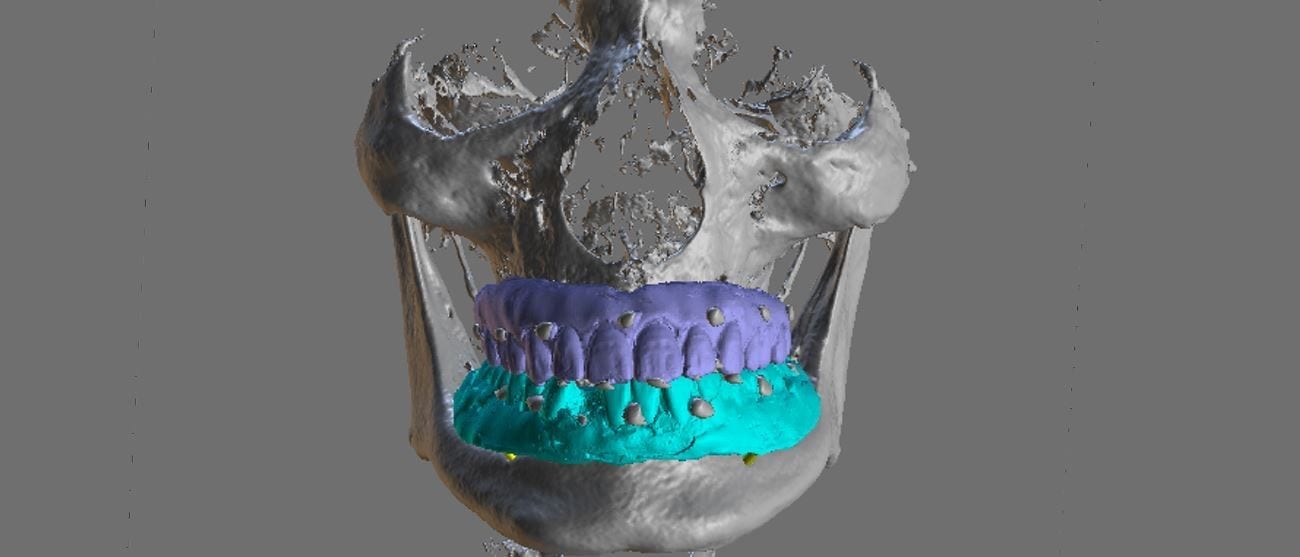
When planning for guided surgery in edentulous patients, it is important to have the final vertical dimension and tooth position determined. Ideally, a denture duplicate should be used with proper radiographic markers.
The traditional way was to embed radio-opaque material in the denture dupe, CT scan the patient with the denture dupes, and then CT scan the denture dupes themselves. Alternatively, you can scan the denture duplicates with a digital impression system. Here we used flowable composite and spread them through the wax set up and take a 3D X-ray of the patient. We then use those landmarks to merge the data sets between the digitize denture and the markers on the CT Scan
An important concept to keep in mind for these edentulous cases is that you actually need 2 models for each arch. One model is used for tooth positioning and implant design, and the other model is used for stent design. Essentially, you design the stent on the ridge, not the denture dupe

One of the biggest hassles in most software is to plan a guided surgery case when the tooth is still present in the arch. Some software will force you to part-take in pylon course handling, gymnastics maneuvers, musical chairs, and multiple imports and exports. The issue revolves around the placement of the sleeve / ring in the design step. Usually you are forced to manipulate the data in 3rd party software and then bring it back with the tooth virtually extracted.
This article is about how you can scan the arches and export the STL, OBJ, or PLY data from the Medit i500 scanner. You can then clone the same case and alter it- namely, you can crop out the tooth that will be extracted in the future. This video shows you how the virtual extraction is performed.
[videopress kcCCj3hu permalink=”false” hd=”true” autoplay=”true”]The multiple data sets are then imported in BlueSkyBio software where there are no limits to the number of models you can bring in. In the following video, you can see how the complete upper arch, the virtually extracted lateral arch model, and the opposing are brought in an merged with the CT Data.
The implant is planned for fully guided procedure and a surgical stent is manufactured on the model that has the virtual extraction. You cannot design a stent correctly with the tooth present in the equation. Open architecture and speedy results are the name of the game now with CAD/CAM dentistry. As you can see, these steps are super fast and easy with the open licensed Medit Scanner
[videopress 3L8BMPpD permalink=”false” hd=”true”]Download the STL
Download the OBJ
Download the PLY
Download the BSB file and design along
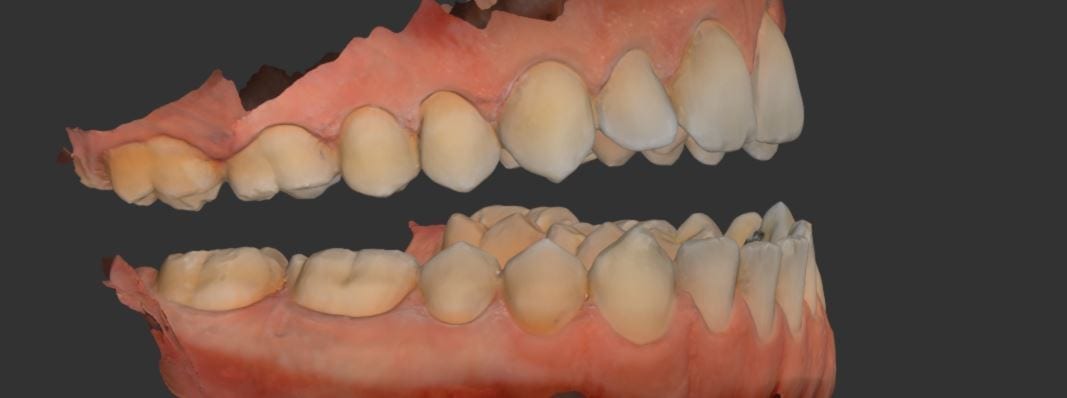
This article documents how to capture upper and lower scans for an oral appliance to treat obstructive sleep apnea. The patient was recently diagnosed with mild sleep apnea with a Home Study Test which revealed quite a lot about his sleeping habits and patterns.
The patient decided to pursue treatment with an oral appliance in lieu of CPAP therapy. Upper and lower impressions were taken, and the occlusal relationship was captured in protrusive and with the vertical dimension set a a tolerable distance. Cotton rolls were used to block out the movement of the tongue which usually interferes with capturing the bite.
Once the bite is captured, we recommend that you move back to the maxilla and mandible catalog box and take additional images to complete and remaining voids in the model. At the end of the article, you can download in multiple formats to see the meshwork and the data that is rendered from the Medit i500 scanner.
Once the patient adapts to the appliance, a titration study will be conducted to measure the effectiveness of the oral appliance
Download the STL
Download the OBJ
Download the PLY

This is a case imaged for an occlusal guard, wehre the upper arch took only 43 seconds to capture. Afterwads, the lower arch is captured, and then ultimately we move to the dual buccal bite. To get enough clearance, we just have the patient bite down on two cotton rolls and hold that position.
One thing to keep in mind is that when you move from one image catalog to another, some processing is done. What we recommend you do is to actually go back to your upper and lower models and fill in any missing data or correct any artifact you may have captured inadvertently. You can see in the footage how the second molars are corrected and filled in with good information.
Note how
[videopress 4p1iee56 permalink=”false” hd=”true”]
[videopress KJRm7CnH permalink=”false” hd=”true”]
Download STL of this Case
Download OBJ of this Case
Download PLY of this Case
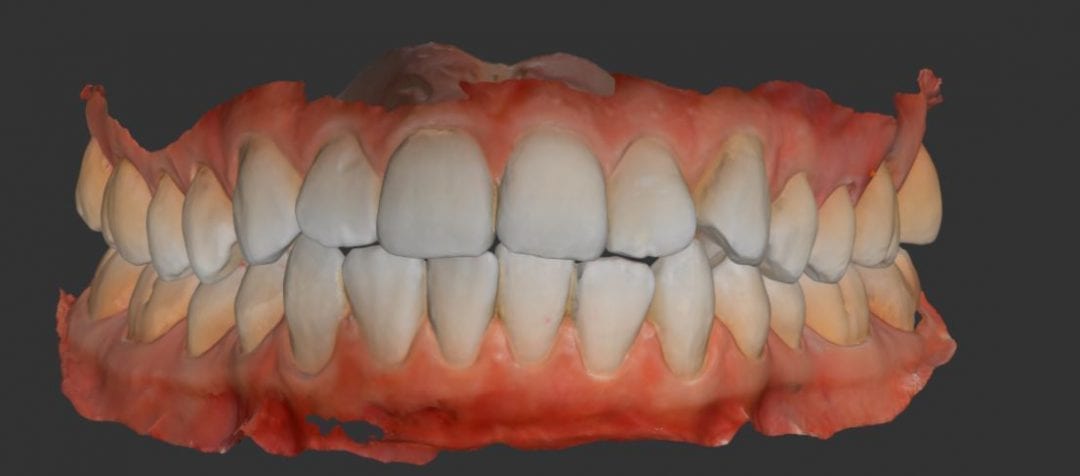
Here’s a clear aligner case where the upper and lower arches were scanned and the buccal bite was taken with the Medit i500 IOS system. Prior to the digital impressions, occlusal markings were made with articualting paper so we can verify the accuracy of the digital bite
In the video, which is sped up, the upper and lower models were corrected when parts of the tongue or cheek were inadvertently incorporated into the models. There are some cool features in the software that allow you to protect areas that you previously captured corrected and areas where you can fill in with new information.
After the models were articulated and the occlusion was verified, the case was exported to BlueSkyBio software for orthodontic planning. You can download the date and design along.
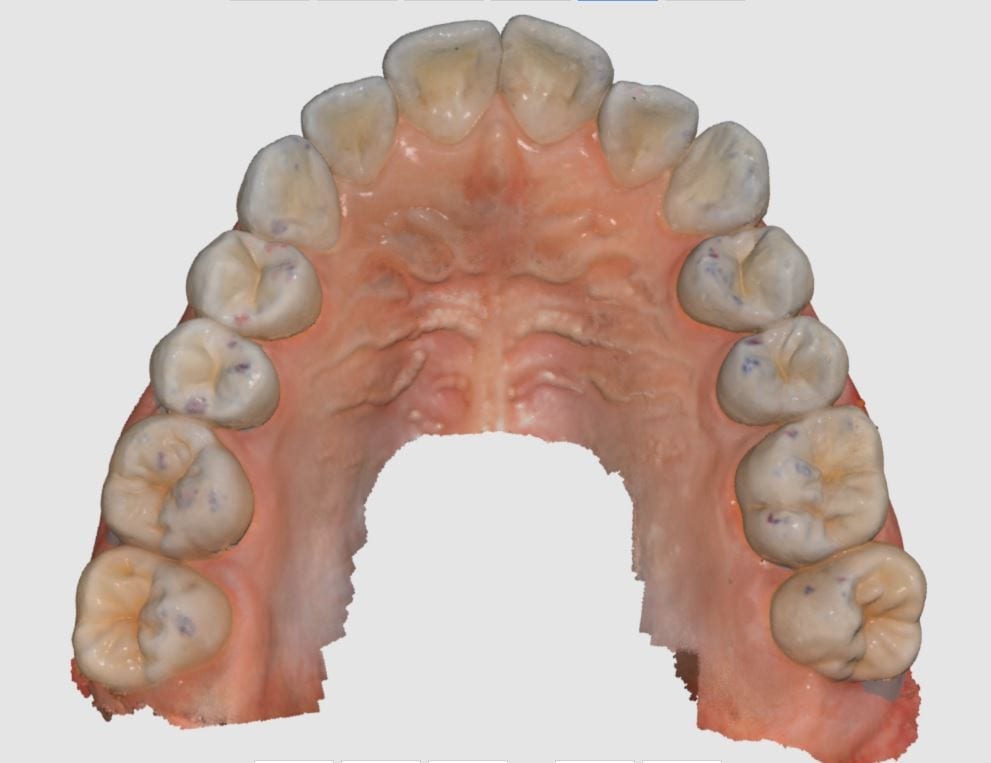
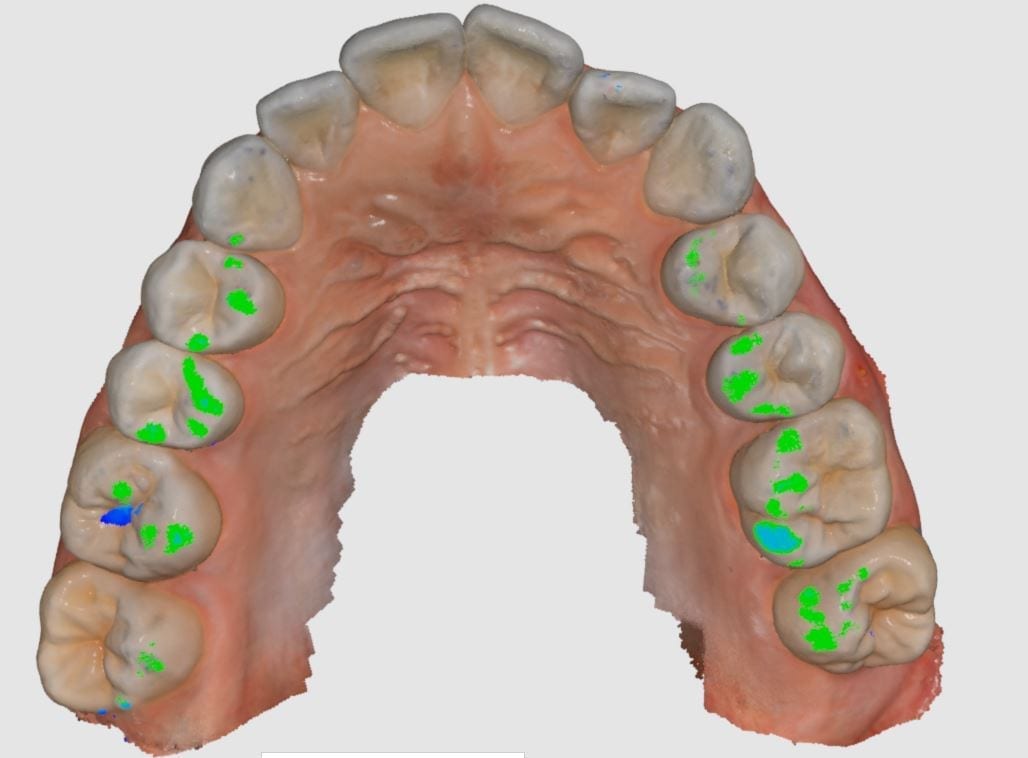
[videopress MThrcIup permalink=”false” hd=”true” loop=”true” autoplay=”true”]
Download OBJ
Download STL
Download PLY
Download BlueSkyBio Ortho Plan
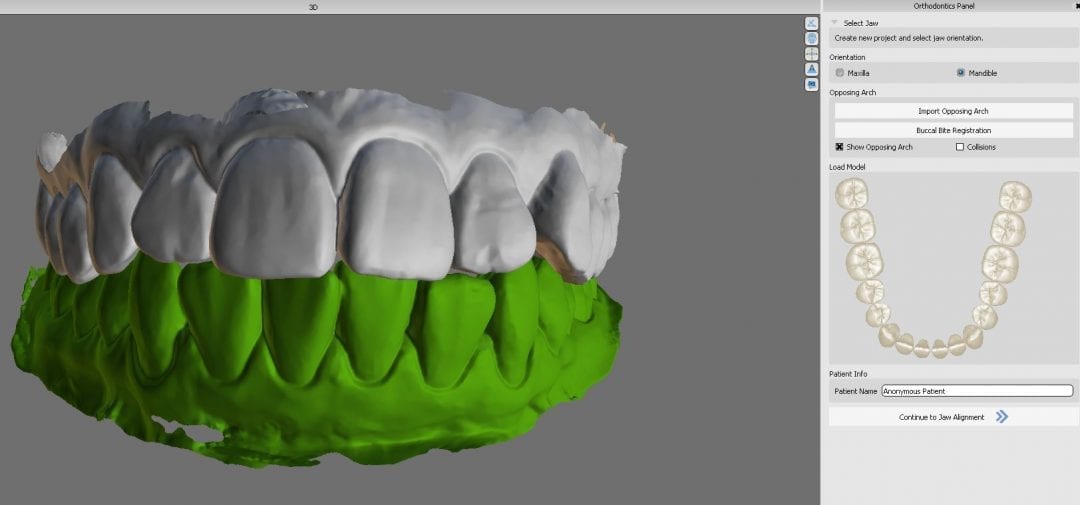
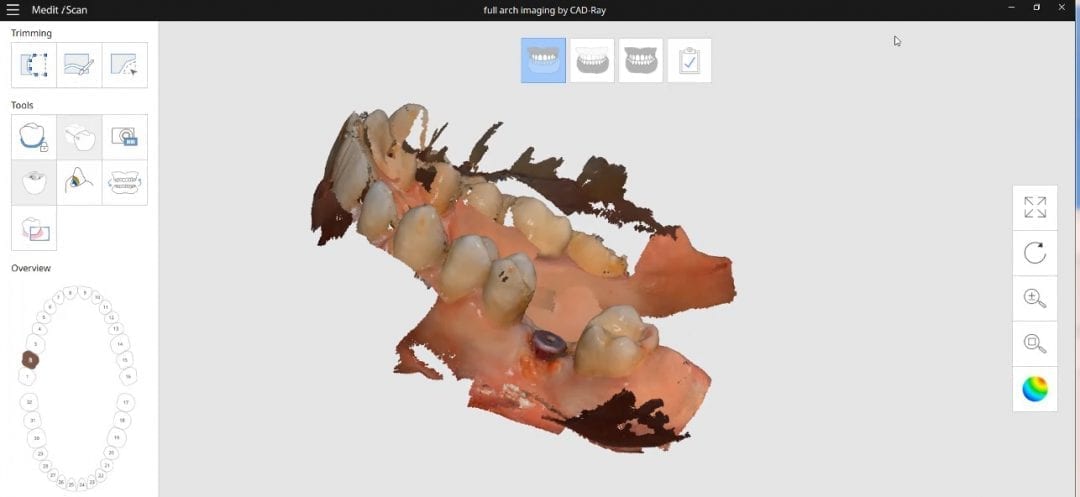
This case shows a full arch imaging where the model starts to go “off track”. To keep the explanation simple, the further away you get from multiple planes / heights of immobile structures, and the more you image in flat areas, you can inadvertently introduce errors in your models. You can see a sample case here in the video.
[videopress zqRzFmTj at=”8″ permalink=”false” hd=”true” autoplay=”true”]
There is a very simple solution, as you can see in this video. It entails consistently moving back to reliable landmarks to stitch new information to exisitng correctly. If you notice how we start imaging on the occlusal of the premolars and the molars, then we roll to the facial of the molars and the back around to the palatal of the molars. Then we sweep over soft tissue on the palate. But we don’t continue in that direction. We immediately return to the molar area so the software has landmarks it can recognize.
We then move the camera forward, image the palatal of the premolars, and then sweep back across the palatal midline. We repeat this back and forth movement to maintain a proper path for the software to recognize landmarks that do not move, in the equation. With this technique, you can scan a whole upper arch in just a couple of minutes and capture great details of the dentition and the soft tissue on the palate
[videopress VVEbeoWs permalink=”false” hd=”true”]
Here, you can see how the software rendered a perfectly accurate and detailed upper arch with the palatal vault captured without any errors.
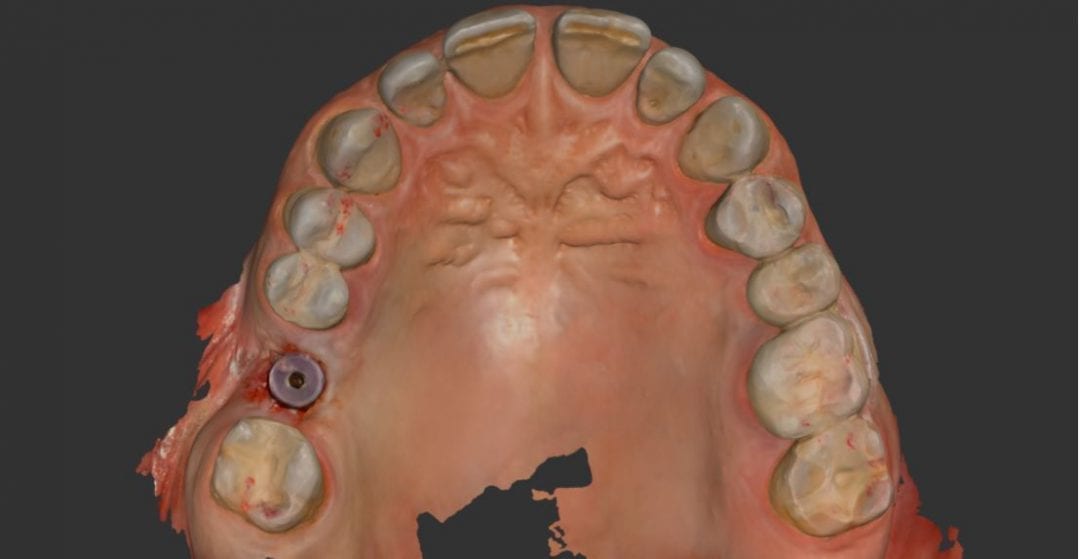
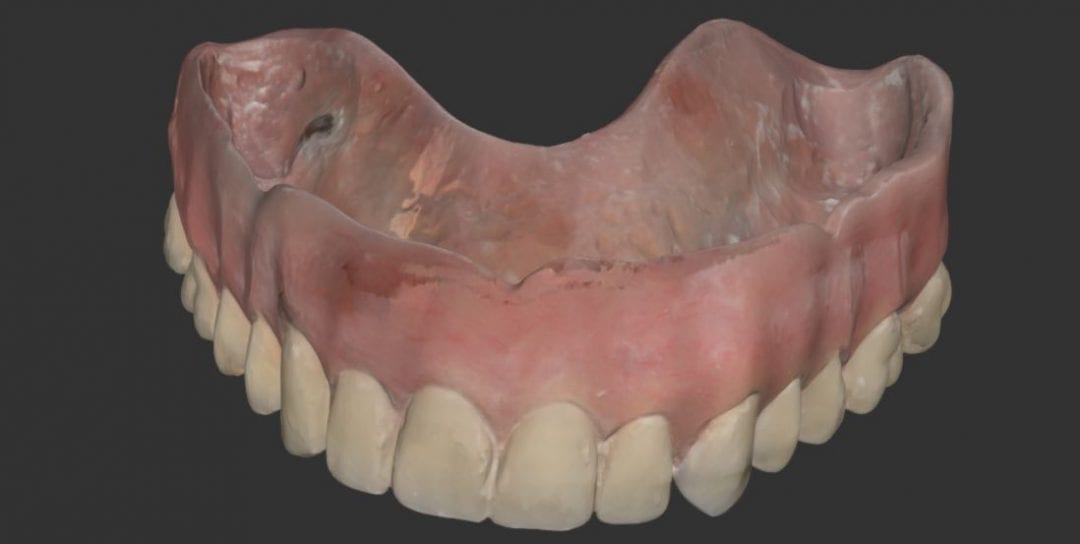
A common question we get at CAD-Ray is if we can duplicate a denture with the Medit i500. It works, and takes about 5 minutes. You can then instantly export the STL, OBJ, or PLY file and take it to any software you want and design cases, print denture duplicates, or use it to set the vertical dimension of a case you are working on. If you capture the lower arch in occlusion with the upper arch wit the buccal bite, you an very accurate articulate edentulous arches to each other, get the right vertical dimension, and start your case planning. This denture dupe can also aid you with setting the teeth and their incisal edges in the correct position
You have to be aware of the fact that you may introduce errors in the process so you have to image properly to reduce those errors. Here is some footage on imaging the denture. We do think scanning this with the desktop scanner, the Medit T500 is a more practical approach.
CASE FILES
Download the OBJ
Download the STL
Here’s a good reason why you would want to dupe a denture chairside; so you can digitally design and fabricate a surgical stent for guided surgery!
You must be logged in to post a comment.